Warning: Brake pads must be changed on both rear wheels at the same time - never change pads on one wheel. Remember also that brake dust contains asbestos. When changing brake pads, use only high quality products from recognized manufacturers.
1. Pump out from a tank of the main brake cylinder about two thirds of a liquid.
2. Loosen the wheel nuts, raise the rear of the car, place it on stands. Block the front wheels and remove the rear.
3. As recommended section 5 of this chapter, remove the brake drums.
4. Carefully check the brake drums as outlined in section 5 of this chapter. Also check for fluid leaks from the wheel cylinder as instructed in chapter 1.
5. Before removing the internal parts of the brake drum, wash them with brake cleaner and allow to dry. Follow the steps shown in the pictures step by step (6.5a - 6.5r). illustrating the procedure for replacing pads.
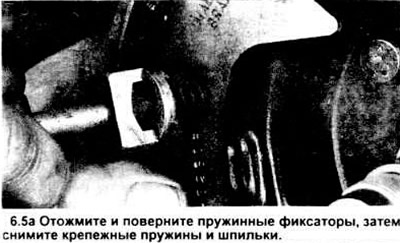
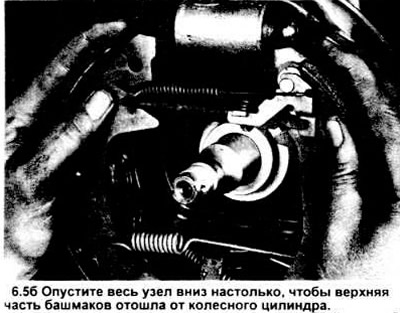
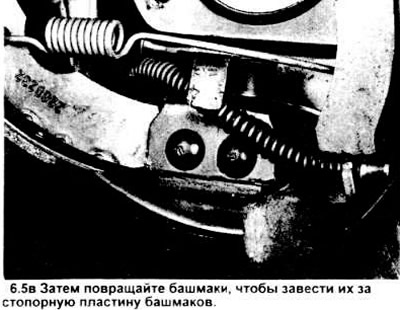
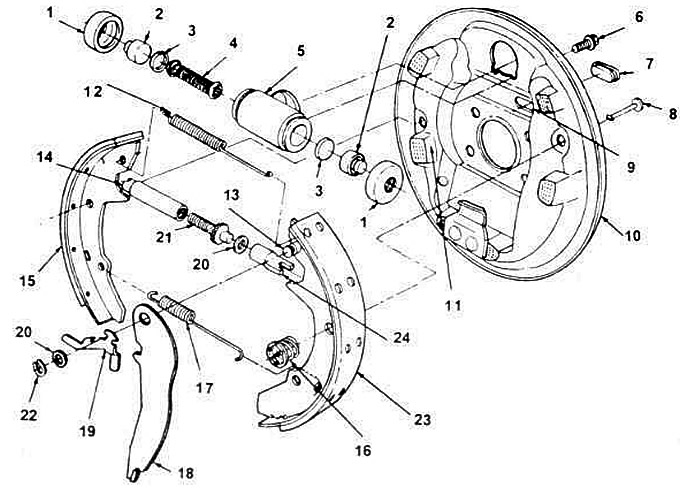
6.5, c. Rear drum brake components - left side shown.
1. Anther.
2. Piston and liner.
3. Cuff.
4. Compression spring.
5. Wheel cylinder.
6. Screw of fastening of the wheel cylinder.
7 Plug.
8. Mounting pin.
9. Additional hole for adjusting the pads.
10. Brake shield.
11. Shoe support.
12. Coupling spring.
13. Hairpin of the parking brake lever.
14. Adjusting head.
15. Front shoe and lining.
16. Clamping springs pads.
17. Lower return spring.
18. Parking brake lever.
19. Adjusting lever.
20. Washer.
21. Adjusting screw.
22. Retaining clip of the parking brake lever.
23. Rear shoe and lining.
24. Rotary adjusting tip.
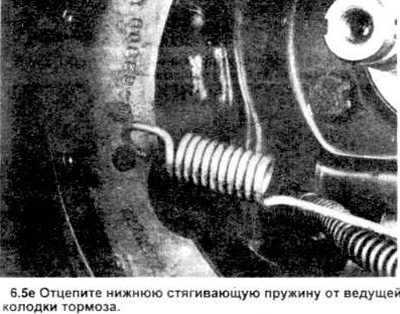
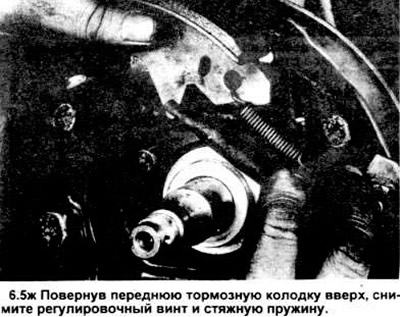
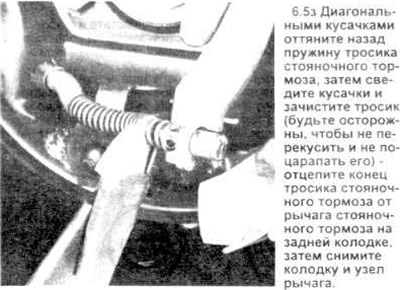
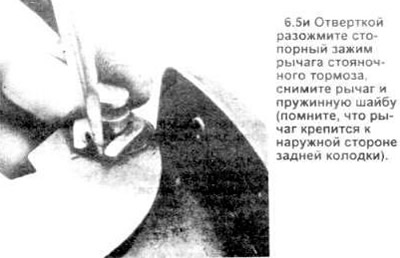
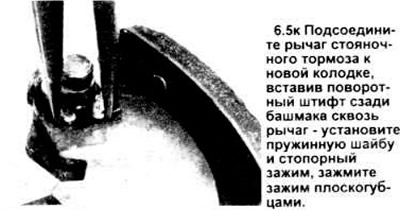
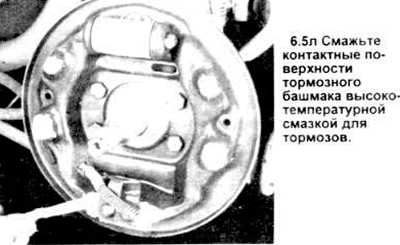
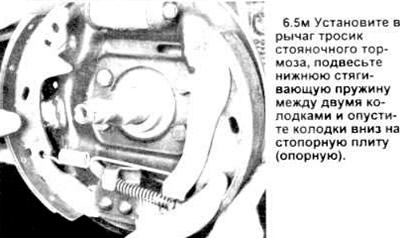
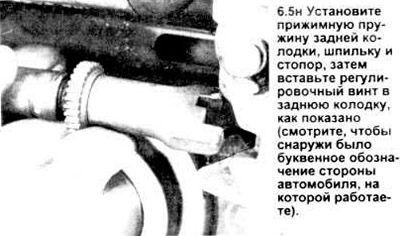
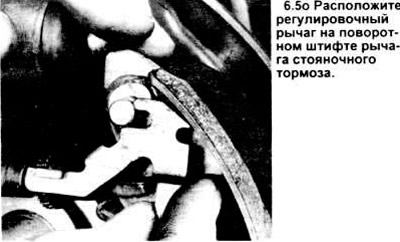
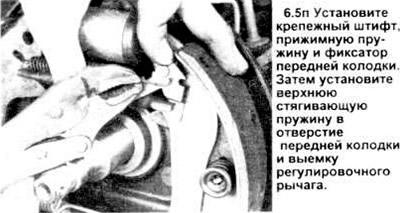
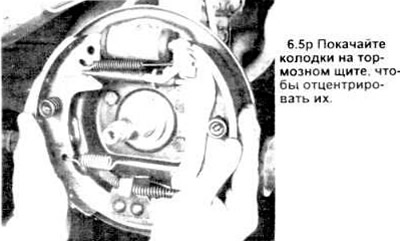
6. With the new pads in place, install the hub/drum assembly as instructed in section 5.
7. Remove the rubber plug from the brake shield.
8. By inserting a narrow screwdriver or adjusting tool (for brakes) through the adjusting hole, turn the sprocket until the brakes are slightly "get stuck" as a result of drum rotation (see picture).
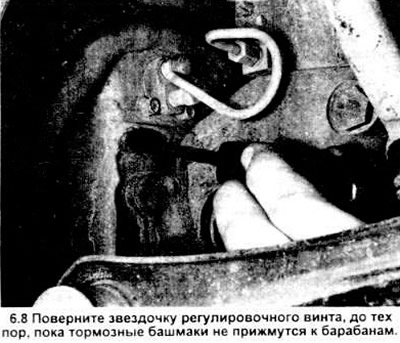
9. Turn the sprocket in the opposite direction until the brakes rotate freely. Keep the adjusting lever away from contact with the sprocket, otherwise it will not rotate (see picture).
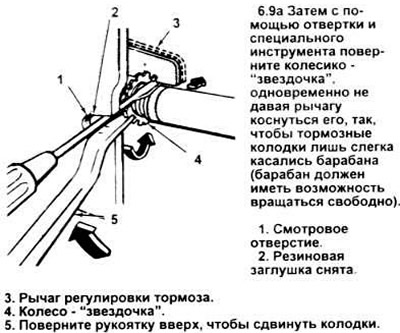
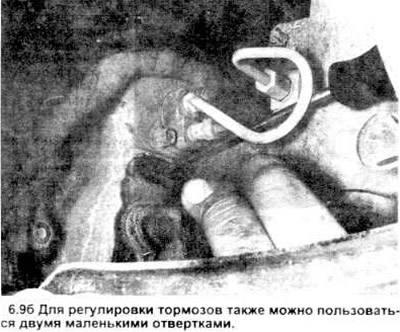
10. Repeat the adjustment on the opposite wheel.
11. Install the plugs in the additional holes of the brake shield.
12. Put the wheels on and lower the car. Tighten the nuts to the required torque.
13. Adjust the parking brake as described in section 12 of this chapter.
14. Fill the main brake cylinder with liquid to the top, pump the pedal several times. Lower the vehicle and check the operation of the brakes.
Visitor comments